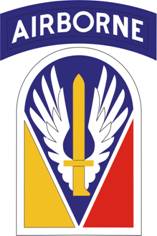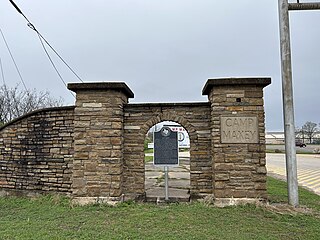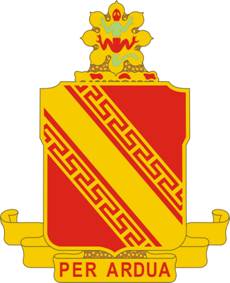Related Research Articles

The 36th Infantry Division ("Arrowhead") also known as the "Panther Division", the "Lone Star Division", "The Texas Army", and the "T-patchers", is an infantry division of the U.S. Army and part of the Texas Army National Guard. The 36th Infantry Division was first organized during World War I (1914–1918) from units of the Texas and Oklahoma National Guards. After the war, the division was reformed as an all-Texas unit, and was called to service for World War II (1937–1945) on 25 November 1940, was deployed to the European Theater of Operations in April 1943, and returned to the Texas National Guard in December 1945.

The 6th Armored Division was an armored division of the United States Army during World War II. It was formed with a cadre from the 2nd Armored Division.

The 16th Armored Division was an armored division of the United States Army in World War II. In its one and only combat operation, the 16th Armored Division liberated the city of Plzeň in western Czechoslovakia, an operation that influenced the landscape of post-war Europe.

The 87th Infantry Division was a unit of the United States Army in World War I and World War II.

The 89th Infantry Division, originally known as the "89th Division," was an infantry formation of the United States Army that was active during World War I, World War II, and the Cold War.

The 95th Infantry Division was an infantry division of the United States Army. Today it exists as the 95th Training Division, a component of the United States Army Reserve headquartered at Fort Sill, Oklahoma.

The 100th Training Division (Leader Development) (formerly the 100th Infantry Division) is a division of the United States Army headquartered at Fort Knox, Kentucky. It currently serves as a major training command of the United States Army Reserve. It has been known as the "Century Division" owing to its "100th" designation.

The 103rd Infantry Division was a unit of the United States Army that served in the U.S. Seventh Army of the 6th Army Group during World War II.

The 79th Infantry Division was an infantry formation of the United States Army Reserve in World Wars I and II.

The 86th Infantry Division, also known as the Blackhawk Division, was a unit of the United States Army in World War I and World War II. Currently called the 86th Training Division, based at Fort McCoy, Wisconsin, members of the division now work with Active Army, Reserve, and National Guard units to provide them with a Decisive Action Training Environment on a yearly basis.

The 31st Infantry Division ("Dixie") was an infantry division of the United States Army National Guard, active almost continuously from 1917 to 1968. Composed of men from Alabama, Florida, Georgia, Louisiana, Michigan, Illinois, and Mississippi at various points in its existence, the division saw service in both World War I and World War II, and was mobilized during the Korean War, although it was not sent overseas in the latter.

Fort Johnson, formerly Fort Polk, is a United States Army installation located in Vernon Parish, Louisiana, about 10 miles (15 km) east of Leesville and 30 miles (50 km) north of DeRidder in Beauregard Parish.
Camp Claiborne was a U.S. Army military camp in the 1930s continuing through World War II located in Rapides Parish in central Louisiana. The camp was under the jurisdiction of the U.S. Eighth Service Command, and included 23,000 acres (93 km²). The camp was just north of the town of present-day Forest Hill, near the intersection of U.S. Highway 165 and Louisiana Highway 112.

Camp Shanks was a United States Army installation in the Orangetown, New York area. Named after Major General David C. Shanks, it was situated near the juncture of the Erie Railroad and the Hudson River. The camp was the largest U.S. Army embarkation camp used during World War II.

Camp Maxey is a Texas Military Department training facility that was originally built as a U.S. Army infantry-training camp during World War II. It was occupied from July 1942 to early 1946, and located near the community of Powderly, Texas in the north central portion of Lamar County, Texas. Its main entrance was located nine miles north of Paris, Texas. Planning for the 70,000-acre military post began in 1940, soon after the National Military Draft was ordered; the planning accelerated in 1941 shortly before the United States entered World War II in December 1941.

The 106th Cavalry Regiment was a mechanized cavalry unit of the United States Army in World War II recognized for its outstanding action. The group was organized in 1921 as part of the Illinois National Guard and during the Spanish–American War and World War I was known as the 1st Regiment Illinois Volunteer Cavalry. It underwent a number of reorganizations before World War II. Like other Guard units during the inter-war years, the 106th held weekly or monthly drills and yearly training. Readiness for war in 1940 led to the mechanization of the unit and induction into federal service at Camp Livingston, Louisiana on 25 November 1940.

The 211th Military Police Battalion is a unit of the Massachusetts Army National Guard. Its Headquarters and Headquarters Detachment is descended from the First Corps of Cadets, initially formed in 1741. It is one of several National Guard units with colonial roots. Its motto is Monstrat Viam – "It Points the Way." While it has served in five wars, the sub-unit's primary contribution to Massachusetts and to the United States was as an officer-producing institution for new regiments from the Revolutionary War through World War II.

The 44th Air Defense Artillery Regiment is an Air Defense Artillery regiment of the United States Army, first constituted in 1918 in the Regular Army during World War I. During World War II the unit served as the 54th Coast Artillery Regiment
The 203rd Engineer Battalion is a combat engineer battalion of the Missouri Army National Guard.
Troop E,256th Cavalry was the armored cavalry reconnaissance troop of the 256th Infantry Brigade of the Louisiana Army National Guard from 1967 to 1995. It was the only unit assigned to the 256th Cavalry parent regiment under the Combat Arms Regimental System, which carried over to the replacement United States Army Regimental System.
References
- 1 2 "Our Places, Our Heritage: A Plan for Historic Preservation and Archaeological Conservation in Louisiana, 2011–2015" (PDF). Louisiana Office Of Cultural Development. January 2011. p. 11. Retrieved June 22, 2016.
- 1 2 3 4 5 6 7 "Camp Livingston Louisiana". alexandria-louisiana.com. Retrieved June 22, 2016.
- ↑ Burton, J.; Farrell, M.; Lord, F.; Lord, R. "Chapter 17: Department of Justice and U.S. Army Facilities". Confinement and Ethnicity: An Overview of World War II Japanese American Relocation Sites. National Park Service. Archived from the original on April 14, 2015. Retrieved June 22, 2016.
- ↑ "Camp Livingston". Densho Encyclopedia. Retrieved 11 June 2014.
- ↑ "Louisiana's Military Heritage: Forts, Camps, and Bases". USS Kidd Veterans Memorial. Archived from the original on December 12, 2012. Retrieved June 22, 2016.
- ↑ "Grant Parish Tidbits". thetowntalk.com. Archived from the original on 2013-02-04.
- ↑ "Camp Livingston Louisiana". WinnFreeNet.com. Retrieved June 22, 2016.